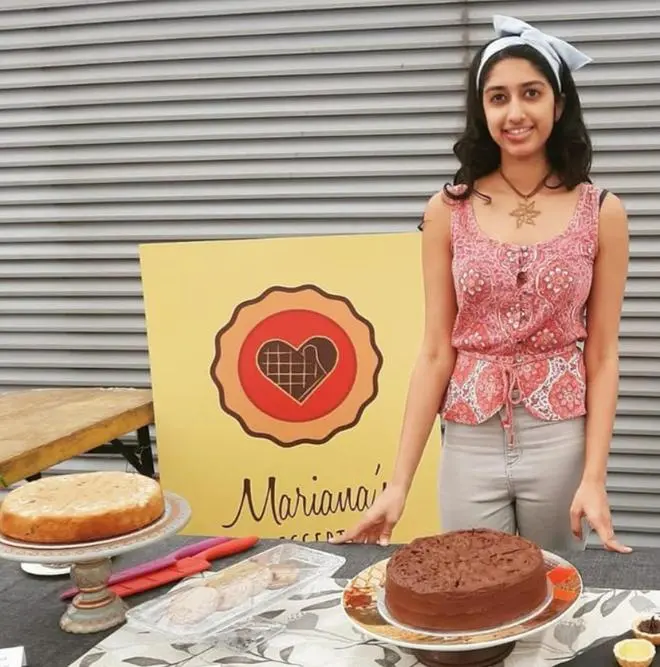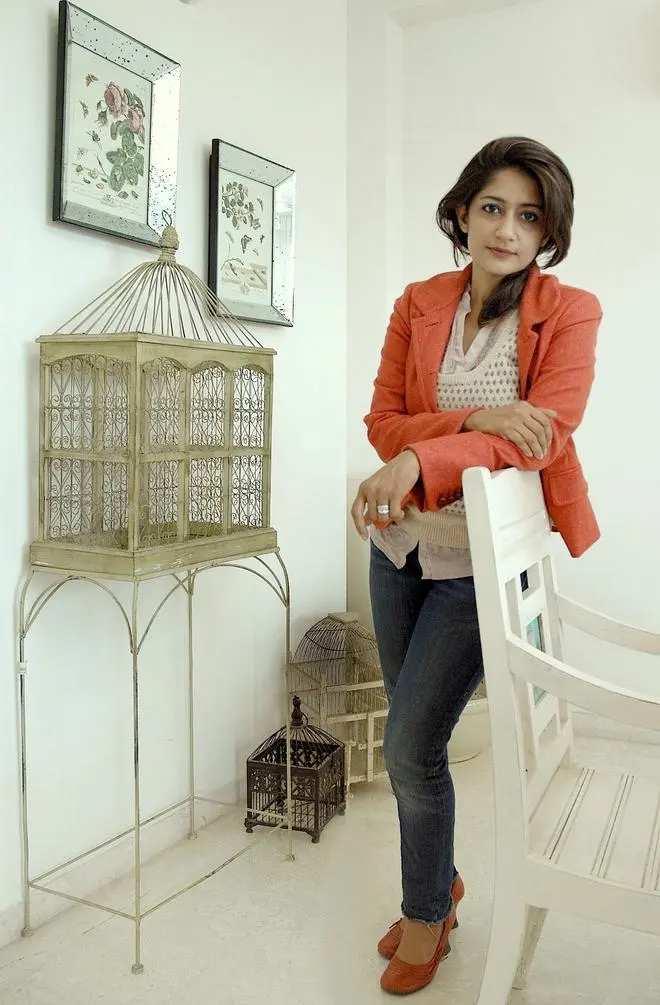Twenty-five-year-old Marika Mammen Appiah started baking professionally in college – back then, she was just selling to friends and family. Fast forward three years and Appiah now runs a small business right from her kitchen – Mariana’s Life of Pie.
When asked about her journey, she says that it all began with a few odd posts on her personal Instagram account. Eventually, when the word started getting out, she created a separate account just for her business.

Marika Mammen Appiah
“The biggest benefit of Instagram is that it is a very inexpensive online space. Anyone can market and sell their products on it. Whereas with a website, you need to invest a little bit,” she says.
Akanksha Nene carved a niche for herself in a similar fashion. When she started selling her handcrafted crystal jewellery in 2019, she didn’t have an inkling that she would one day quit her corporate job to pursue her passion full-time.
“In those days, the small business scene in India was nowhere close to what it is right now. Social media has really provided an impetus for many people to come out and monetise a skill,” observes Nene, who currently sells all her products through Instagram, under the brand name Gaea.

Akanksha Nene
Finding their true calling
Welcome to the passion economy – an economy built around creators who are motivated to start a brand, business or community revolving around their own interests, hobbies or passions. The passion economy is fuelled by a plethora of platforms like YouTube, Instagram, Etsy, and OnlyFans. While content creators have become digital stars, purpose-driven solopreneurs are scaling businesses born out of their passion on these platforms as well.
According to a Meta spokesperson, 90 per cent of people on Instagram follow a business. “The platform brings communities together, offering further ways to shop online instead of in-store, and providing a place to educate and entertain customers with interactive video experiences.”
The Meta-owned platform indeed struck gold in 2020, when it switched focus to the video format and launched its Instagram Reels feature, promptly replacing Tik Tok – which was banned by the Indian government in the same year.
“The world is moving towards video, rather than images. People are into short-form musical content that’s catchy and fun. It’s probably why many small business owners use Instagram Reels to reach more people,” adds Appiah.
For creators of homespun brands with a limited budget for customer acquisition, Reels works out perfectly as even those not following can stumble upon it through both the Explore and Reels tab.
Related Stories
Are legacy ad agencies losing their buzz?
Why start-ups with heavy ad budgets are preferring freelancers, in-house set-ups or alternative creative shopsNene – who has recently begun dipping her toe into the world of Reels – agrees that it’s an effective tool for boosting organic reach. On scaling up plans, she said that her next order of business was to get Gaea’s website up and running. She also intends to start promoting her brand through Facebook, hoping that this will help her reach a different audience.
Seller-aligned model
Although Nene has briefly dabbled with e-commerce marketplace, Etsy, she doesn’t feel like it’s the best bet for her business.
“Etsy is an international platform and you need to have PayPal for it. That’s a different headache altogether,” she laments.
On the other hand, Payal Jaggi – who started her upcycled apparel brand ‘Kinche’ on Etsy – says that the decision to sell her products on the platform was a no-brainer.

Payal Jaggi
“Etsy is one of the biggest platforms for handmade goods and no one is on par with it when it comes to sustainable wear,” she says.
Apart from marketing on Instagram, Jaggi uses Etsy ads to spread the word about her brand. In her opinion, Etsy invests a lot of money to promote its sellers and give them a strong foothold in the business world. “With lower barriers to entry than a traditional business, Etsy sellers are able to experiment with entrepreneurship on their own time and in their own style,” says an Etsy spokesperson.
Needless to say, Etsy’s seller-aligned business model – the platform makes money only when sellers make money – has changed the game for many solopreneurs who are looking for additional income streams. According to Etsy, 92 per cent of its sellers are solopreneurs, and 97 per cent operate their creative business from home. The platform’s strongest categories in India have been apparel, gems and jewellery, fabrics and home decor.
Rising to the occasion
Although Appiah, Nene and Jaggi agree that Instagram is their go-to marketing tool, they have faced their fair share of challenges in creating content consistently on the platform.
“I’m the only person running my business, from marketing to sourcing and production. Doing everything end-to-end by myself is difficult,” says Appiah, adding that she would definitely consider hiring a dedicated team for marketing.
Jaggi isn’t very enthusiastic about the prospect, though. She finds it quite difficult to work with contract photographers as they often struggle to understand her vision. To compensate, Jaggi found herself picking up a camera and learning the tricks of the trade herself.
Related Stories
The art of changing social media profiles one link at a time
How 'link-in-bio' tool is helping creators promote their content, products“But it’s important to remember that when you’re a small business owner, it’s your job to train and employ people. Don’t try to do everything on your own; no man is an island,” she adds.
When the Covid-19 pandemic hit, consumers became more familiar with online shopping. This shone a ray of hope on small business owners all over the country. As the initial distrust associated with digital payments began to wear off, creative entrepreneurs struck while the iron was hot and became active contributors to the booming creator economy. But how far passion and digital tools can take them remains to be seen.







Comments
Comments have to be in English, and in full sentences. They cannot be abusive or personal. Please abide by our community guidelines for posting your comments.
We have migrated to a new commenting platform. If you are already a registered user of TheHindu Businessline and logged in, you may continue to engage with our articles. If you do not have an account please register and login to post comments. Users can access their older comments by logging into their accounts on Vuukle.